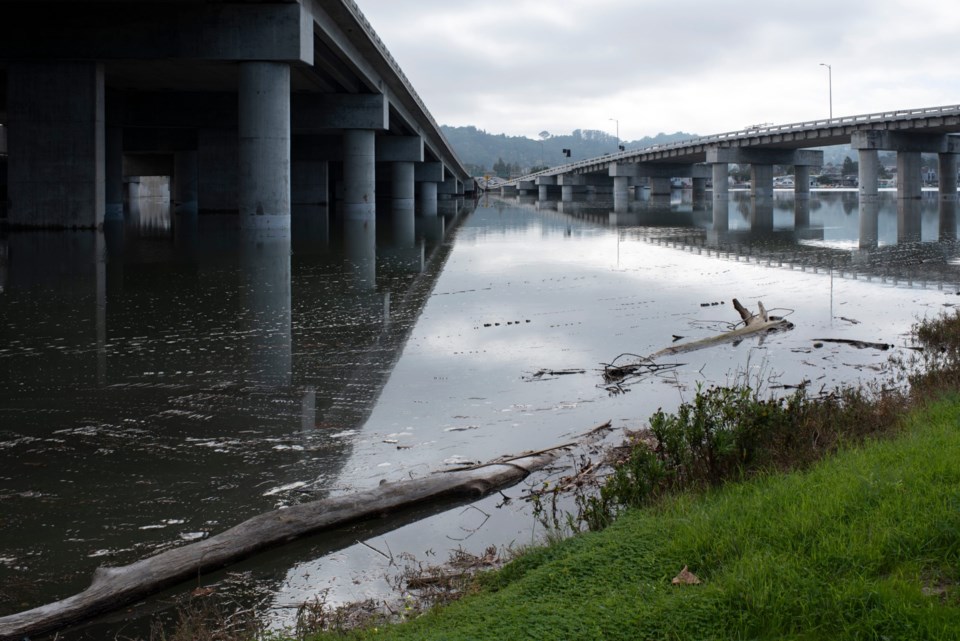Do you recall first hearing the term “king tide?” Sounds so regal and rare.
The sight of my first king tide is still burned into my brain. A decade ago, on my daily dog walk along the Kitsilano Beach seawall, I rounded the turn by Kits Pool and stopped in my tracks, stunned and scared.
The waters of English Bay reached fully up and over the seawall. Flooded, but not by wind and waves; it was eerily calm. Just definitely not where ocean waters would typically be.
It was spooky, unnerving, otherworldly, I felt as though my eyes were deceiving me. Frozen, I stood and stared for a long while.
Immediately upon returning home, I did some research and found the term king tide: an especially high spring tide, especially the perigean tides which occur three or four times a year.
Whew, I thought, this is normal. Maybe in my 40 years of living on this coast I’d missed some? I accepted it as part of the cycle of coastal tides.
The next one I saw was different: it took out a huge swath of the False Creek seawall last year. Once more, I started asking questions, and found a longer, more “celestial” explanation:
King tides are the highest tides. They are naturally occurring, predictable events.
Tides are the movement of water across Earth’s surface caused by the combined effects of the gravitational forces exerted by the Moon, Sun, and the rotation of Earth which manifest in the local rise and fall of sea levels. Tides are driven by the relative positions of the Earth, Sun, Moon, land formations, and relative location on Earth.
Mmmm-hm. Something still wasn’t adding up. My spidey senses stayed peaked.
Never really on board with either explanation, watching sandbag walls erected each spring at Spanish Banks, had me feeling like there was more to this.
It left me with a lingering uneasiness. My born and raised coastal kid’s stomach continued to turn each time I drove down that road. “Can this really just be a moon thing?”
Fast forward to last week, where the most recent king tide, coupled with a storm, was blamed for tearing up Stanley Park and Ambleside seawalls while tossing around massive logs like toothpicks onto beaches, destroying docks and coastal structures, setting anchored boats adrift.
Once more, I asked questions. According to the Environmental Protection Agency of America:
King tides bring unusually high water levels, and they can cause local tidal flooding. Over time, sea level rise is raising the height of tidal systems. Average daily water levels are rising along with the oceans. As a result, high tides are reaching higher and extending further inland than in the past. King tides preview how sea level rise will affect coastal places. As time goes by, the water level reached now during a king tide will be the water level reached at high tide on an average day.
In other words: it’s an issue, and one that coastal cities like Vancouver need to deal with. Today’s Middle is a clear ask that our leaders focus more on tangible threats like this, and less about the cost of a disposable cup or paper bag at a fast-food restaurant, or even an added 10 cents a litre on gas. The focus should be on doing more to help protect citizens from the threat on our doorstep – literally.
Being warned about Atmospheric Rivers, Heat Domes and Polar Vortexes are important, but preparing for the regularity of all of these weather and climate phenomena is even more crucial.
Less talk and tax, more protective and proactive. Even the highest carbon tax is won’t hold back the king tides. Royal action is required.
Jody Vance is a born and raised Vancouverite who’s spent 30 years in both local and national media. The first woman in the history of Canadian TV to host her own sports show in primetime, since 2011 she’s been working in both TV and radio covering news and current affairs.



